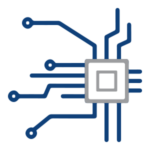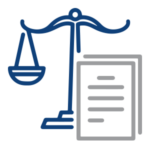A Civilized Revolution
Today, the world’s most efficient patent licensing is via a royalty-based subscription to the world’s largest inclusive list of patents that may be used by a product and dividing the income among the published patents’ owners based on the quality of their patents. This is PatentBook licensing.
Improving Upon Traditional Patent Licensing Models


Understanding PatentBooks
Using current telecommunications and logistics, large quantities of patents related to a specific product or service can now be licensed in a single price royalty-based transaction via a PatentBook. The PatentBook Administrator invites owners of patents that may be related to a product to publish their patents in a PatentBook, and sells non-exclusive licenses to the PatentBook patents via subscription to currently unlicensed manufacturers of that product. Licensing revenue generated by a PatentBook is then distributed by patent quality, ascertained by technical, economic, and legal professionals trained to validate the self-evaluations of the patents according to internationally standardized PatentBook patent evaluation criteria.
Technical, economic, and legal subject matter expert (SME) review of a patent is required to get a valid, accurate patent evaluation, especially when significant money is involved. The key to accurate and repeatable reviews is a standard set of patent evaluation criteria.
Patent Evaluation
The Patent Quality Metrics determine the income distribution for PatentBooks, including specific criteria in three areas critical to the value of a patent:

Technical

Legal

Economic
The individual criteria are familiar factors in patent licensing, such as Observability, Ease of Investigation, Availability of Alternatives, Scope of Claims, Litigation History, Value Contribution, Market Size and Direction, and others.
Our Tried and True Evaluation Method
The evaluation criteria for PatentBooks has been perfected over two decades by evaluating more than one million international patents. The PatentBook patent evaluation criteria and the evaluations of the most valuable PatentBook patents themselves are both transparent and publicly available via the PatentBooks website.
Patent owners are encouraged to self-evaluate their patents using these criteria and have their self-evaluations validated by a PatentBook Administrator. Patents that have been evaluated and validated may be placed into one of the top two tiers of patent quality, thus qualifying for the highest possible PatentBook revenue distribution available at that time.
Patent Evaluation Tiers
Since the highest quality evaluated patents contained in a PatentBook receive the highest percentage royalty income distribution, patent owners are always invited to evaluate the quality of the patents they publish in a PatentBook.

Tier 1
The Tier 1 patents, which consist of the top 2% of the quality patents published in a PatentBook, proportionally share 50% of the distributed PatentBook licensing income.

Tier 2
The Tier 2 patents, which include the next highest 13% of the quality patents published in the PatentBook, proportionally share the next 35% of the distributed PatentBook licensing income.

Tier 3
The Tier 3 patents, which include the remaining 85% of all the patents published within the PatentBook and are most likely unrated, proportionally share the remaining 15% of the distributed PatentBook licensing income.
Groups Benefited By PatentBooks
Inventors/Patent Owners
Inventors and other patent owners who own PatentBook patents want to be efficiently and effectively compensated for the use of their patented technologies. Current patent monetization methodologies often involve selling their patents, bilateral licensing negotiations, or patent litigation — all of which are costly.
Product Manufacturers
Product manufacturers that build PatentBook products want to uniformly honor the owners of the patents being used within their products by efficiently paying for their use of the PatentBook patents. Product manufacturers universally abhor patent litigation as a means of compensating patent owners for the use of their patents.
Retail Chains
Retail chains that sell PatentBook products want to ensure they are transacting business on legitimately licensed products. The risks of a disruption in their supply chain due to an injunction on product shipments due to patent litigation is both costly and disruptive to their businesses.
International Courts
International courts want transparent impartial references for valuing patent transactions. Judges often complement juries on their ability to decide guilt and innocence but are very concerned about juries’ ability to accurately ascertain damages.
Governments
Governments want to stimulate economic activity for their countries and their neighbors by paying and receiving fair compensation for the use of patents as a means of efficient technology transfer. National patent offices have been seeking solutions to improving the quality of patents issued for many years.
Patent Industry Professionals
Patent industry professionals benefit from the new opportunities that PatentBooks create in the areas of patent evaluation and commercialization of nascent technologies
Patent Owners Benefits
Humanity worldwide seeks to improve their living conditions via learning from their neighbors. Today’s technologies allow people to learn about inventions from around the world, fulfilling the purpose of patent systems — to encourage progress in science and the arts. Now there is a commercial solution for everyone to use patented inventions and receive compensation for their use.
- Simplicity of publishing patents.
- Zero cost of publishing non-evaluated patents.
- Painless receipt of licensing income based on the quality of evaluated patents.
- Even non-evaluated PatentBook patents earn a share of 15% of the distributed income.
Unrated patents may be combined with other patents and subscribed to by both large manufacturers of PatentBook products and other new companies in developing countries. Over time, some of these non-evaluated patents may be adopted by manufacturers and may become valuable to consumers. Should this happen, and a patent owner recognizes their patent being widely used by commercially successful products, that patent owner may subsequently re-evaluate the patent using the PatentBook evaluation criteria, and choose to have its PatentBook patent re-validated by the PatentBook Administrator for potential placement in a higher tier to earn a higher distribution of income.
Usually, publishing patents to a PatentBook complements, and does not fully replace, other patent licensing approaches employed by a patent owner. Patents listed within a PatentBook may always be licensed separately to specific companies independent of the PatentBook. Patents within a PatentBook may also be published in multiple PatentBooks simultaneously, or be available through patent pools, to licensees.
Maintaining all the pride, rights, and privileges associated with patent ownership is a key benefit for patent owners publishing to a PatentBook since the inventor or patent owners always maintain full ownership of their patents. Other patent monetization models require the patent owner to either sell their patents to a third party or incur the very high costs and risks associated with patent litigation.
There is also no charge for a patent owner to cease publishing its patents in a PatentBook. The only residual obligation of the patent owner is to honor the patent licenses granted to product manufacturers that subscribed to the PatentBook while its patents were published in the PatentBook.

Manufacturer Benefits
PatentBook licenses appeal to product manufacturers because the manufacturer gets a license to many thousands of patents that its product may or may not contain at the same time, at a single rate, for a very competitive price, without litigation expense. The United States marketplace is now opened up to that manufacturer at a very competitive and predictable price.
Other companies that do not subscribe to a PatentBook are still subject to patent enforcement actions and injunctions on product shipments, potentially risking significant supply chain disruptions and increased expenses.
Manufacturers subscribing to patents via PatentBook licensees see improvements in profits and predictability in their business since their PatentBook subscription nearly eliminates their risk of destructive and expensive patent litigation as they enter new world markets. Since the cost of a PatentBook subscription is far less expensive than patent litigation, the manufacturer has significantly reduced the risk of patent litigation that could disrupt his business profits, management activities, and product shipments.
Having already paid for the legitimate use of thousands of technologies via their PatentBook subscription, manufacturers also now may access a very large list of fully licensed technologies that may be included in their products to help them distinguish their products from competitive products. This product diversification opportunity helps both competition and consumer choice, and stimulates further innovation as it provides simple patent licensing solutions.
Retail Prefers Licensed Products
Retail chains that sell products containing technology found in PatentBooks are motivated and monitored to ensure they sell fully licensed products. Properly licensed products help promote innovation and stimulate worldwide economies, while reducing the business and financial risks inherent in selling unlicensed products. The MPEG-LA v. WalMart litigation outcome regarding sales of products unlicensed vividly illustrated the perils for both retailers and manufacturers of selling unlicensed products.
Other types of licensed intellectual property contained within products sold by retail stores, such as branded sports team apparel and equipment, designer clothing and accessories, and software, are watched carefully for both legitimate licensing and potential counterfeiting and copying. PatentBook licensed products will be monitored similarly.

Courts Desire Transaction References
Judges involved in US patent litigation have long bemoaned the fact that there are few, if any, reliable economic comparable transactions for patent litigation damage values. Using PatentBook transactions as a reference, a patent involved in litigation may easily be evaluated for its quality and how much that patent may have received were it listed in a PatentBook. This reference provides the court a commercially valid comparable damages value.
The net effect of this new valuation reference is likely to be an overall reduction in the economic value and quantity of patent litigation currently clogging the world’s court systems.
Governments Want Economic Stimulus and Quality Patents
Governments stimulate their economies to help improve the standard of living for their citizens. Since governments create patent systems, they respect the rights they grant to inventors. Subscribing to a PatentBook is an easy and efficient way to legitimately stimulate thinking and economic development by giving licensed access to a coherent package of patented technologies, thus reducing the risk for capital investment and economic development.
Governments also manage licensed commerce. As such, governments may access the list of PatentBook subscribers. The list of PatentBook subscribers also provides an easy reference for customs and border patrol personnel to check on legitimate commercial transactions.
In recent decades, national patent offices have been crushed by the demand for more patents, an increase in the quantity of patent litigation, and the proliferation of new patent monetization businesses such as patent trolls. Many attempts, most recently the October 2011 America Invents Act, have tried to remedy this situation by limiting the number of patents issued, improving the quality of patents, and regulating transactions and litigation involving patents.
Arbitrary metrics, especially those created by governments as commercially uninterested parties in a patent transaction, seldom work. As patent owners further understand the commercial significance of their patents via PatentBooks, it is highly likely that fewer low-quality invention disclosures will be submitted to national patent offices, thus resulting in higher quality issued patents.


Other Patent Licensing Models
Intellectual property licensing between patent owners and product manufacturers is done in two ways today, both of which have been around for centuries: bilateral licensing between a patent owner and a prospective licensee, or through a patent pool, which offers product manufacturers single-price licenses to an exclusive group of standards-based patents if the patents are deemed “essential” to a specific technology standard.
Bilateral patent licensing requires specifically skilled negotiators and consumes significant time and money. Patent licensing teams often consist of legal, technical, and business personnel. A single successful transaction often takes 18-36 months to complete, requiring many face-to-face meetings in locations all over the world. Should litigation be required to complete a patent licensing transaction, both the time and expense to resolve the agreement will increase dramatically. Patent litigation averages US $7M in outside expenses and 3-5 years per case if the matter goes to trial. These are direct costs. Management distraction of all parties to the litigation is a far greater, and largely undocumented, cost.
Patent pools improve the efficiency of licensing transactions. Patent pools offer single price licenses to a group of patents deemed “essential” to a technical specification standard. Patent pools were advocated by the US government in the early 20th century for airplane and sewing machine technologies. Patent pools exist today for DVD, Blu-Ray, RFID, MPEG, and 4G/LTE technologies. Because the specifications underpinning today’s patent pools were created by competitors, patents being considered for inclusion into a patent pool must be deemed “essential” to the specification by a patent pool administrator to avoid antitrust issues. Only those patents deemed “essential” to the specification are included in the patent pool. All other non-essential patents are excluded from the pool. This “essentiality” requirement unnecessarily limits the number of patents listed in a patent pool. Most patent pools contain a few hundred patents, with the largest patent pools only containing a thousand patents. Owners of patents in the pool uniformly share pool royalties based on the number of patents that are included in the patent pool.
Current Patent Licensing Model Limitations
Current Patent Licensing Model Limitations

Most technology areas and products are not covered by specifications.

Only very large institutions have the resources required to launch licensing businesses.

Thousands of companies in developing countries produce large volumes of high-quality products that are sold in the US and around the world. These products use intellectual property owned by others.

Patent owners are rewarded based on the number of their patents in a patent pool, not the quality of the patents in the pool.
The World’s First: The Advanced Vehicle PatentBook™
The advent of electric and autonomous vehicles creates the merger of patent licensing philosophies within the high tech industry, where high-risk, high-stakes patent litigation is routine, and the automotive industry, where a sense of mutual destruction results in a sense of detente’.
World leaders in autonomous vehicles recognize the benefits of working together to efficiently license publicly available patented technologies. The Advanced Vehicle PatentBook, launched on September 1, 2019, allows all electric and autonomous vehicle-related patent owners to publish their patents to the PatentBook, and for all electric and autonomous vehicle-related patent users to pay a single price to license all the patents published to the PatentBook. All patent owners receive their patent-quality related fair share of income from patent users subscribed to the Advanced Vehicle PatentBook quickly, predictably, and at low cost, with no risk.
PatentBooks are technology and geography independent. Subsequent PatentBooks will be created for other High Technology, Energy, and Healthcare products and services.
The PatentBook model will be licensed globally.

Conclusion
Humanity worldwide seeks to improve their living conditions via learning from their neighbors. Today’s technologies allow people to learn about inventions from around the world, fulfilling the purpose of patent systems — to encourage progress in science and the arts. Now there is a commercial solution for everyone to use patented inventions and receive compensation for their use.
PatentBooks offer an easy way for manufacturers to legitimately produce products, retailers to sell licensed products, and for inventors to be paid fairly for the use of their inventions that enable commercially significant products. PatentBooks are an intelligent combination of known techniques that revolutionize patent licensing.